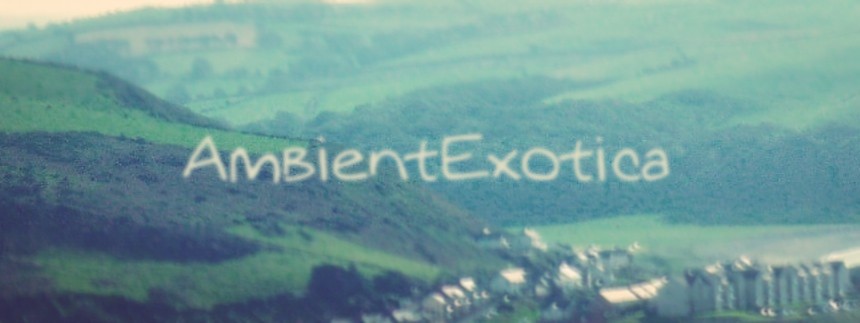
Markus Guentner
Talking Clouds EP
2012
There are only few producers like Regensburg-raised Markus Guentner who are so tremendously good in their highly diverse fields. Where other producers come up with different monikers or faux-biographies when they break the boundaries of the music styles they're known and loved for, Guentner remains surprisingly alias-free, despite his two faces that each target different audiences: there are his club-oriented, acidic 4/4 Schaffel stompers, and then there's his Ambient side. Naturally, this is the more intriguing field for me, so if I told you that I'm a huge fan of Markus Guentner's music, I would be lying, as I'm only bathing in the synth creeks of his Ambient releases, for this is what he does best, so I think. Having reviewed his works for Kompakt Records, the terrifically deep and Modern Classical-influenced In Moll (2001) and his even mellower, if at times beat-driven follow-up 1981 (2005) as well as his curation for Joachim Spieth's Affin label called Affin Ambient Edition Volume 2 (2009), I was happy to encounter a new release by him, a three-track EP called Talking Clouds, released on A Strangely Isolated Place and part of its Places Series where artists paint aural dioramas of places of shelter and nostalgia that they're encountered during their life. At time of publishing this review, it is available at the label's Bandcamp page – for free! Guentner dedicates all of the three pieces to his home city of Regensburg, Germany. Whereas all music producers are driving in hoardes to Berlin, Cologne or even Düsseldorf as of late, Guentner deliberately stays in his town. This romantic viewpoint doesn't imply a still life, for Guentner comes up with compositions that are inspirations caused by nocturnal driving sessions through suburban surroundings. Luckily, all three pieces are pristine Pop Ambient takes which will be looked at in greater detail below.
The opener Saint is an unexpectedly immediate piece, for it doesn't fade in gently as the majority of Guentner's material, but launches in medias res, with its phantasmagorically sparkling bells and the accentuating monotony of an intensive synth drone already intact, the latter oscillating ever so slightly, sometimes resembling a synth choir, at other times evoking a potentially gelid loftiness. A long synth pad thread is added to the entanglement and further accompanied by mellow, almost unnoticeable bass bumps. Once the listener adjusts to the sound spectrum, the bells are slowly thinning and fading, and while they remain present throughout the composition, they're actually making room for the synth washes to whirr and float. Saint is a superb track. It unites the prototypical depth of Guentner's production with manifold glints and gleams of the bells which remind of Guentner's debut on Kompakt, his 12" release called Regensburg that has also been featured on the first Pop Ambient installment, Pop Ambient 2001. While the bells were deeper back then, they're polished and clinging iridescently on here. And let's not forget the slowed-down bells of Guentner's opening track of his album debut In Moll where the listener is greeted with a similarly blithesome warmth. Guentner recalls his childhood memories in Saint, as he grew up near a church. With this explanation in mind, lots of his tracks lay wide open in front of the listener.
Up next is Dockside, and as Guentner points out in the liner notes, it is one of the tracks that happened by chance (or is it providence?), as it doesn't rely on a particular childhood memory, but focuses on the ambiguity between nature and machinery. When the sun rises on the east docks of Regensburg, the red and yellow illumination on the bare metal of the machines combined with the beautiful gaze into dawning nature make this a spectacular view, I imagine. At least that's what the digital cover artwork for this particular track shows. Consequently, Dockside gets rid of the bells in favor of a similarly glimmering device, namely a seven-note steel guitar-like loop. Whether this is really played on a guitar or not I can't say, for the guitar-resembling characteristic traits are heavily processed and whitewashed, leaving dreamy twangs that are embedded in-between magnanimously bright synth streams and accompanying faux-harpsichord stabs. The depicted panorama is utterly friendly and balmy, but keeps a pinch of an enigma close to its nucleus. All in all, Dockside is yet another of his Ambient Drone tracks that caters to my needs. Sure, it's of the ethereal and saccharine kind, but so encompassing and embracing that I'm washed away.
I'm not washed away for good, though, as there's one final track left, the titular piece of eight minutes, Talking Clouds. It's another track that derives from Guentner's nightly trips; this time he visits the parking area of a hospital in Regensburg. Since it's built on a hill, the downward gaze to the peaceful landscape is as close at hand as the view to the sky. The gateway to Talking Clouds comprises of the airy monotony of a carefully warbled synth breeze that is coupled with a slowly approaching bass drone that adds plasticity and depth to the admittedly thinner than usual synth structure. Keeping this monotony intact, with anything else but silky trembles in-between the aural synthscape, the listener is completely entrapped in this celestial ether. Only near the end do gentle wind gusts rev up the consistency, but I've only encountered them after the fourth listening session or so, for they are very mild and perfectly integrated in the mix. Monotony is the keyword here, and it's the positive kind of stringent synth streams. It's not the first track Guentner has constructed in this fashion. The premise is to get lost in monotony, and tracks like these can surely be used as background music or for coping with university thesis-related tasks. But listening closer to Talking Clouds unveils the microscopic alcoves and fissures through which the sound waves float. I've spent lots of time on my desk with Drone music like this, and it is as inviting for a deep listening session as it is allowing you to concentrate on your actual task, without disturbing you. Such being the case, Talking Clouds completes the EP-related triptych; successfully, I might add.
"Thankfully it's Ambient!" was my immediate reaction when I got to know about the existence of Markus Guentner's Talking Clouds EP. As a fan of Wolfgang Voigt, I don't mind pumping 4/4 beats in Ambient music at all, but I usually find myself preferring the beatless kind of Drone music or a more dubby approach. Guentner delivers a gem of an EP that inherits all the characteristic trademarks of his sound which he has built in the last decade and continues to deliver. The label A Strangely Isolated Place is the fitting summer house for Guentner to gather together three wonderfully mellow and friendly Ambient tracks with not a doleful mood or dark spirit in sight. Only occasionally does a kind of mystique glint through the shedloads of synths, but this is seldom perceptible. The current trends in Ambient music are the return of the frosty Glitch formula and the electro-acoustic intertwining of guitars with synths. Luckily, Guentner's release doesn't fall in those categories which I love myself, don't get me wrong! I am, however, all the more glad that he maintains and refines his Pop Ambient style, which was deemed as old-fashioned in a recent Pitchfork review of the Pop Ambient 2012 compilation (see my review here). Why, thank you very much, nostalgia has always been old-fashioned and dependent on memories, so where's the problem? There isn't any with the Talking Clouds EP, for which I am grateful.
Ambient Review 103: Markus Guentner – Talking Clouds EP (2012). Originally published on Aug. 1, 2012 at AmbientExotica.com.
